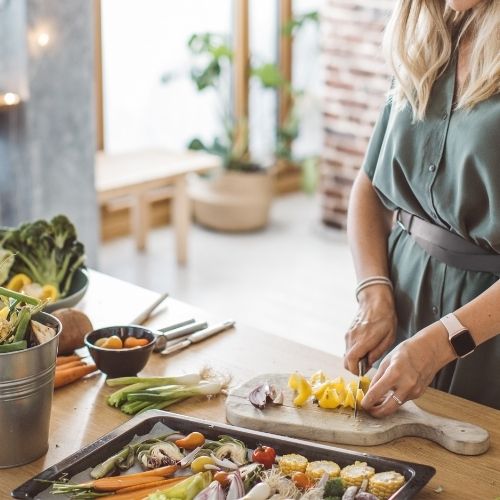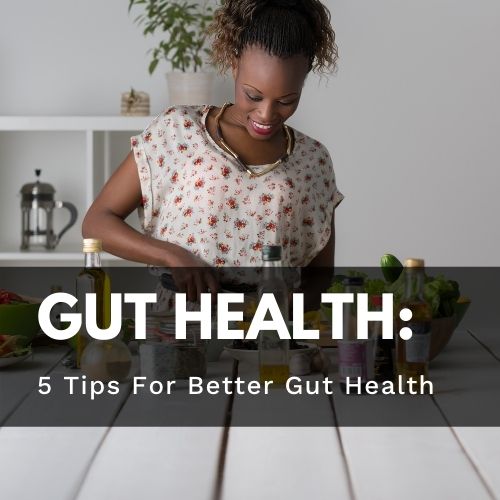Your Cart is Empty
COLLECTIONS:
SPECIAL OFFERS:
LEARN:

5 Natural Ways to Improve Bone Strength
April 30, 2019 6 min read
Can you remember the last time you thanked your bones? Strong bones are key for a healthy and active lifestyle, yet it is so easy to take them for granted until something goes wrong.
As the unsung heroes of the body, bones literally support you, protect your vital organs, and store minerals, such as calcium. Along with helping you move, they also produce red blood cells.
Whether you are 10 years old or 110 years old, there are simple and effective ways to build strong and healthy bones for years to come.
5 Natural Ways to Improve Bone Strength

Below are the top, researched-backed tips for building stronger bones.
1. Get Enough Sunshine (& Vitamin D)
Demanding lifestyles, bad weather, and comfy couches are a few of the many reasons that staying indoors and being inactive is becoming the new status quo.
National trends suggest fewer and fewer adults are meeting the recommended physical activity guidelines with each passing year.
Excessive sitting not only leads to weaker muscles (due to limited exercise), it also can affect bone health.
When you spend too much time indoors, this can deprive your body of Vitamin D, the sunshine vitamin, which is necessary for healthy bones.
Vitamin D’simportant rolein bone strengthening lies in its ability to help your body absorb enough calcium from the foods you eat. Calcium and Vitamin Dwork together to help you maintain healthy bones.
This is discussed further below.
While getting a little more sun is a feasible way for some people to improve their Vitamin D levels, just doing this one action won’t help everyone.
If you live in a northern climate or a city with a lot of smog, routinely cover most of your skin when outdoors (with clothes or sunblock), or have darker skin, you may have a harder time producing enough Vitamin D from sunlight.
Therefore, consider having your Vitamin D level tested and thensupplementaccordingly. If you are far outside the optimal range, mostfood sources will be insufficient for providing adequate vitamin D.
To naturally increase your vitamin D levels, add frequent, small bursts of outdoor activity to your day, especially during the summer months. And remember to wear short sleeves so you leave more skin exposed!
Go for a walk in the morning or midday.
Jog outside instead of inside on the treadmill.
Take your dog for a walk.
Have a picnic.
You get the idea.
2. Consume High-Calcium Foods
Calcium is important for bone health. You probably know this already. But do you know why?
Calcium is the mineral that is laid down when your body builds new bone tissue.
And since old bone cells are constantly being broken down and replaced by new bone cells, eating enough calcium gives your body the "raw materials" that it needs to build up and repair your bones.
The amount of calcium that you need differs depending on your age. Generally speaking, as you grow older, yourcalcium needs will increase in order to maintain healthy bone tissue.
Unlike Vitamin D, dietary calcium sources are generally preferred over taking supplements. This is becauseexcessive calcium supplementation has been linked to an increased risk of cardiovascular complications.
Fortunately, there are plenty offoods that are excellent sources of calcium. The best sources include dairy products such as milk, yogurt, and cheese.
If you are unable to consume dairy products, non-dairy milks that are fortified with calcium and Vitamin D are good alternatives.
In order for a drink to be agood source of calcium and vitamin D, look for beverages that contain at least 20% of your daily value for each of these nutrients.
Remember that adequate Vitamin D intake and levels is required for optimal calcium absorption.
3. Eat Enough Protein
You may be surprised to see protein on this list, but there's a good reason for it.
Adequate protein intakestimulates bone and muscle formation and enhances the absorption of calcium from food. Most adults actually get enough protein, so there’s no need to go overboard.
Those who may need to pay special attention to getting enough protein are vegans and older adults. Vegans should focus on regularly incorporating high-quality protein sources like beans, tofu, tempeh, nuts, and seeds.
Vegetarians who regularly include eggs and dairy products are more likely to get enough protein.
Older adults can becomeless sensitiveto the bone and muscle-enhancing effects of protein and need to take care to include good protein sources with every meal, especially after working out.
It is good practice for older adults to try todistribute protein sources throughout the day instead of eating just one large serving.
This is because the body becomes less able to use protein to build and maintain healthy muscles as we age. Good sources of protein include: meats, poultry, fish, eggs, dairy, and the vegetarian sources mentioned above.
So how much protein is necessary for the body to have strong bones?
This varies based on your body size, activity level, health status and more. Generally speaking,older adults, those who are more physically active, and those who have large amounts of muscle mass require more protein on a daily basis.
4. Taking A Vitamin K2 Supplement
While there is no "magic potion" for building stronger bones, several nutrients play a key role in this process.
As we discussed above, Vitamin D and calcium are necessary for bone health. Emerging research suggests the bone-building effects of Vitamin K2 should not be overlooked either.
If you have never heard of Vitamin K2, you are are not alone.Supplementation with Vitamin K2 for adults looking to support bone health is standard in Japan but it hasn’t quite caught on in the United States yet.
When you hear about vitamin K, often it’s about vitamin K1. Vitamin K1 is necessary for appropriate blood clotting. In fact, it is so important that newborns often receive a vitamin K1 injection as soon as they’re born to prevent excessive bleeding.
Leafy greens and plant oils contain the largest amounts of vitamin K1 and most people are unlikely to be deficient.
Vitamin K2, on the other hand, is essential for activating osteocalcin. This protein is found in bone tissue, and when activated, it helps the body remove calcium from the blood and place it in the bones.
This helps to support joint elasticity and overall bone health.
Vitamin K2 also keeps calcium where it belongs. Someresearch suggests that those deficient in vitamin K2 may be more likely to have changes in calcium metabolism that may be harmful.
The good news is that plenty of foods contain Vitamin K2 including hard cheeses, egg yolks, chicken liver and breast, ground beef, and even sauerkraut.
However, several studies have found that larger doses of Vitamin K2 from supplements are well tolerated and can supportbone density andreduce fracture risksignificantly.
These effects may beenhanced when combined with adequate calcium intake and a vitamin D supplement, such as in ourVitamin D + K2supplement.
Want to learn more about supplementation?
Check out our blog post on theBest Bone Supplements. Complementing Vitamin D3 and K2 with other supplements like Magnesium can be beneficial, as these nutrients all work together to build stronger bones.
5. Focus on Bone Strengthening Exercises
Your bones have the ability to adjust to the stress that you put them under. This means that activities that stress your bones (in a good way!) will help to strengthen them.
One of the best ways to stimulate bone strengthening is via exercise, but it has to be the right kind of exercise. Theevidence suggests that resistance training with weights is the best way to improve bone strength.
How you train can determine how well your bones will respond. For example, lifting light weights slowly may have almost no effect on strengthening your bones.
However, lifting progressively heavier weights and completing reps faster seems to have the strongest effects.
Before embarking down this road, it is important to get clearance from a health professional and find a qualified trainer to help you design a workout plan that will be as safe and effective as possible.
In addition to resistance training, other high impact activities are also important.
These include things like jumping, dancing, jogging, or climbing stairs.
Of course, proceed with caution if you have a bone-related disorder or a history of injuries.
________________________________________________

Samantha Thoms, MPH, RD Samantha Thoms is a Registered Dietitian. She enjoys sharing practical information about how people can lead healthier lifestyles by making simple changes. Check out more information on her website: https://www.budgetdietitian.com.
Leave a comment
Comments will be approved before showing up.
Also in Health
Subscribe
Sign up to get the latest on sales, new releases and more …
Join the Utzy Naturals Club!
Sign up and get the latest on sales, new releases, and more...









